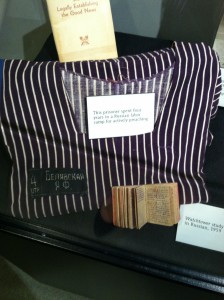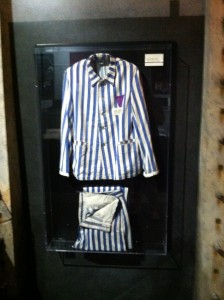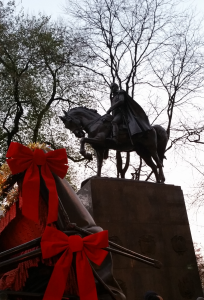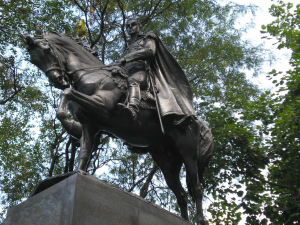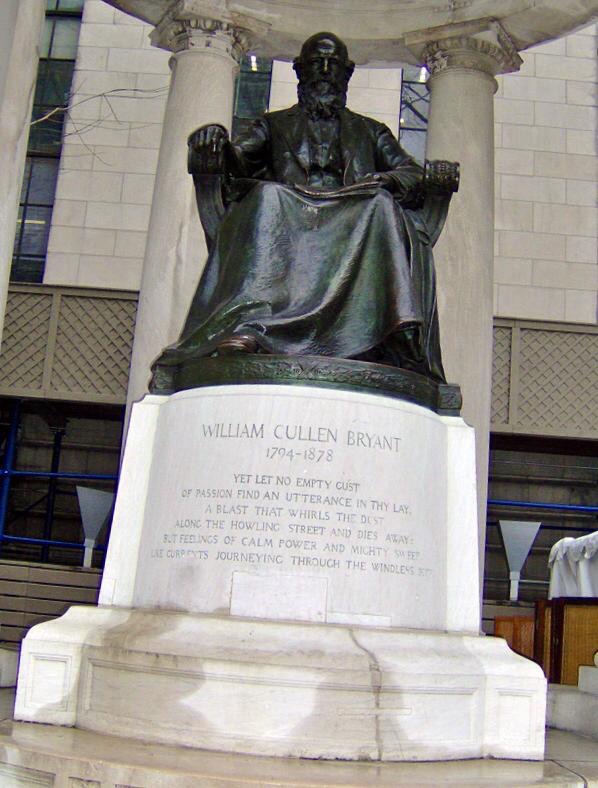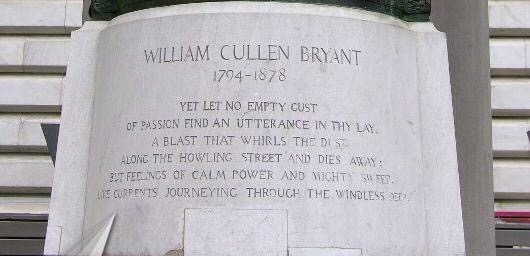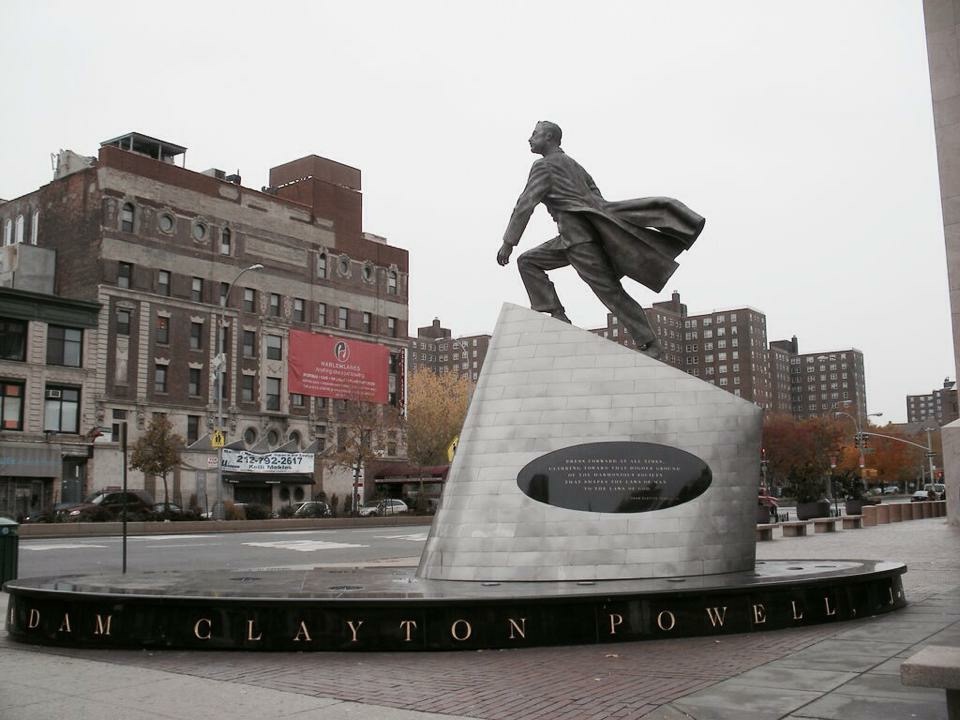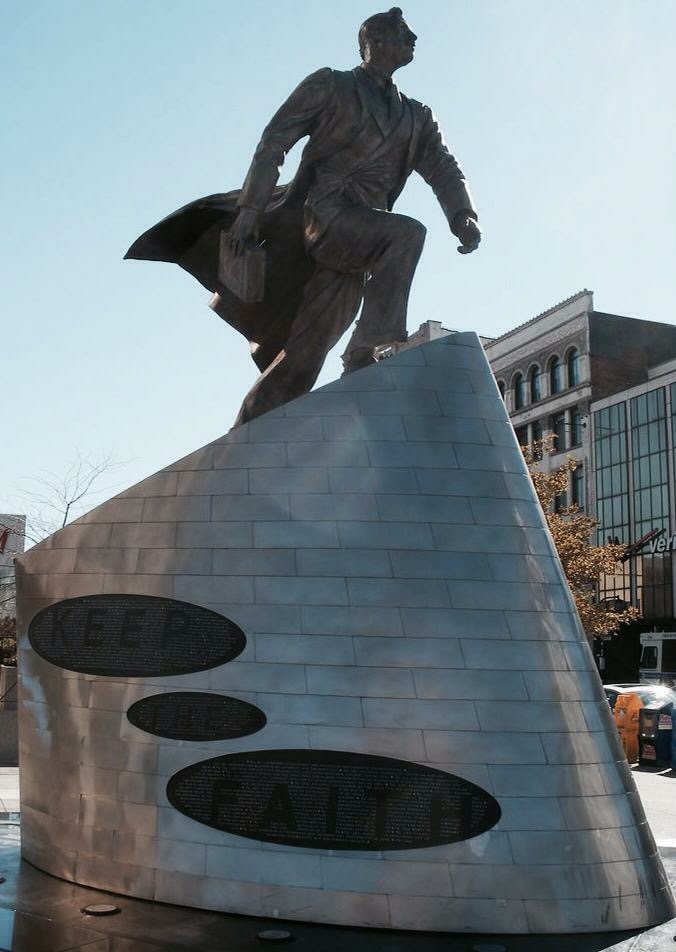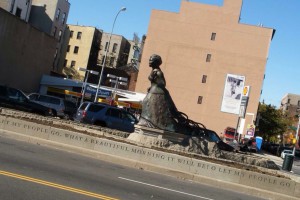- This is a uniform of Jehovah’s Witnesses who spent time in a Soviet Union labor camp. This was found in the Watchtower building 25 Columbia Heights in Brooklyn, NY, in the display “A People for Jehovah’s Name: Archives.)
- This was to commemorate Jehovah’s witnesses who were imprisoned in Soviet labor camps during the Cold War. They are being honored because of how brave they were to stand up to men like Stalin who said he would “Stamp out Jehovah’s Witness name from all of Russia.” Even though their preaching work was under ban during the Soviet rule they continued to so by any means they could. They would write and publish literature in their own homes and had portable printing presses that they would have to hide in their homes in order to protect themselves from Soviet Officers. Sometimes though they would be caught and sentenced to Russian labor camps. Many times after they finished serving their sentence they would resume the work they did before. They are honored because many died in the labor camps, some lived to their old age but have died recently and they showed great faith and showed devotion to their cause.
- Again this was a faith strengthening commemoration to me. Not a lot of people would go to the lengths that these men and women did in order to fulfill what they believed was the duty they owed to their God. They did this fully knowing that they could be thrown in jail, some risked, therefore, time away from their families. Yet, when you read their personal experiences, all say that they regret nothing and it strengthened their relationship with their God. They all went through really hard times and yet they stayed positive and strong. It was very moving to read their experiences and I was amazed by what they did.
Monthly Archives: December 2015
Odessa Steward
- I took this picture in my neighborhood; this is the street I live on.
- The person being commemorated in this picture is a woman that lived in my building. Her name is Odessa Steward. She is was known for all the things she has done for everyone in the neighborhood. This isn’t the safest area, yet she always organized meetings on how we can work together to make the area better so we can all feels safer, such as the “Neighborhood Watch” where groups of people would volunteer to sit on a desk in the lobby of each of the buildings until a certain time. Of course that didn’t last long because not that many people volunteered, but she also organized Halloween and Christmas parties and used to put up decorations and lights. She always tried to keep everyone in the neighborhood together. 103rd street, the street she lived on, was renamed in honor of Odessa Steward.
- This Street event happened 5 years ago and I still remember that day like it was yesterday. I was on my way home from school and i was so happy to see this. This women had a beautiful heart and she will always be remembered.
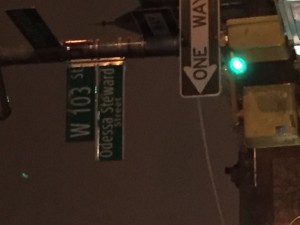
Dorothy Haase- Jehovah’s Witnesses in Concentration Camps
- This photo was taken in the Watchtower building 25 Columbia Heights in Brooklyn, NY. This was in a display called “A People for Jehovah’s Name: Archives.” This is a special display that tells the history of Jehovah’s Witnesses from the late 1800’s to the present.
- This is commemorating the Jehovah’s Witnesses that were imprisoned in Nazi Germany. This was the clothes that the Witnesses would wear in the camps and you can see the little purple triangle. The purple triangle identified these people as Jehovah’s Witnesses as the yellow star identified other prisoners as Jewish. This group of people are being commemorated because of the sacrifice and time spent in the concentration camps. This group was imprisoned because they refused to swear allegiance to Adolf Hitler and fight for him because of their stance they were impressed. After the Jewish group Jehovah’s witnesses were the second largest group of people imprisoned in these camps. They are being commemorated for their brave stance not to give into Hitler’s evil regime.
- This truly moved me when I saw it. In addition to having the uniform in the Archives, there were also personal stories of real survivors and a life sized remake of what the cells they were locked in looked like. It really made me put myself in these people’s shoes and realized the amazing faith that they displayed (a lot of them relayed that it was their faith in their God, Jehovah that kept them going their time in the camps). It is wonderful that they were able to tell their story because of the bravery that they and faith they showed, and it strengthened my own faith when I saw it.
Simon Bolivar Bronze Statue
- The statue of Simon Bolivar is located where I took the photograph, at the Gate entrance to the Park at 59th Street and Avenue of the Americas. R. De Las Cora designed the first statue of Simon Bolivar that was installed in Central Park in 1891 on a knoll near West 83rd Street, also known as the “Bolivar Hill.”
- This statue of bronze equestrian sculptures represents Latin American leaders, the Simon Bolivar statue commemorates him as he was military general and advocate of Pan-Americanism. Bolivar is credited with the liberation from Spanish domination of Venezuela, Colombia, Ecuador, Peru, Bolivia, and Panama. He is being highly honored through these well- made monument as he was born in Venezuela and is recognized to being one of South America’s greatest generals, he was called El Liberator because his victories over Spaniards won independence for Bolivia (named after him), Panama, Colombia, Ecuador, Peru and Venezuela.
- My reflections in regards to this commemoration of Simon Bolivar is that the bronze statue is very tall and high in height and it looks as if it was made in very hard material. I was thrilled to find out that there are a lot of statues of Simon Bolivar all around the world. Also as I was looking at the high statue and remembered what I’ve learned on my history class in high school that this monument was given to the U.S as a gift from the Venezuelan government.
Simón Bolívar Monument, 6th Avenue Central Park
Simón Bolívar (1783-1830), born in Venezuela and one of South America’s greatest generals, was called El Liberator because of his victories over Spaniards winning independence from Bolivia (named after him). Dedicated in 1921, this statue depicts the general who has been referred to as the “George Washington of South America”.
The above photos of the monument are rightfully placed by the Artist’s Gate entrance by Central Park at 59th Street and Avenue of Americas. But this monument was not always located at this entrance way. The statue was originally sited on the rock between 82nd and 83rd Street overlooking Central Park West, where the Bolívar Hotel is located. But critics of the statue believed it did not live up to the original artistic vision and so it was subsequently moved. After Sixth Avenue was renamed Avenue of the Americas in 1945, the statue was relocated in the 1950’s to be paired with that of José de San Martín at the head of the avenue. The equestrian statue is made of bronze with the pedestal out of black granite.
I first spotted this statue in a cab on the way to Strawberry Fields, I’ve heard of Simón Bolívar but never knew there was a statue of him in New York City. It’s very respectable of the city to dedicate a monument to such a historic general. I really enjoyed the research I put into this assignment and it was a plus getting to roam around the city.
Thomas Jefferson memorial- Parth Patel

This picture was taken in Washington D.C at the Thomas Jefferson Memorial. On the month of July of 2015. This was a trip me and my friends went on to visit every monument and historical land cites. This was our first statue that we saw when we got to Washington D.C, national mall.
Thomas Jefferson is being commemorated for being the founding father of this great nation. Since he also drafted the Declaration of the Independence and the adviser to the Constitution. His monument and statue is the 4th most popular American Architecture in America today. It is very elegant, especially because it is right in front of the Potomac River. This monument gives hour to our founding father of this country and gives tribute to the spirit of America. With that being said, he also created the Bill of Rights to add to the Constitution of the United States. And he was our 3rd president of the United States. His accomplishments were on a scale that was too grand, and this was a tiny way to pay respects to him.
I personally think that this commemoration was so well done. Especially, where the architect positioned the monument in front of the Potomac River. When i got to the national mall, i was shell shocked on how beautiful the architecture and the design looked. I mean, i did not expect this much for a president until i remembered, he was not only our 3rd president, but he wrote the bill of rights, he drafted the US Constitution and wrote the Bill of Rights. In my opinion, one of the best works in D.C. is his monument.
Abraham Lincoln- Parth Patel

This particular picture was taken in Washington D.C., at the Lincoln memorial. The statute took close to 50 years to construct. And it did not open to the public until 1922. The monument project was funded after the assassination of Abraham Lincoln. The Lincoln memorial has a Greek influenced architecture. This picture was taken July of 2015. Picture taken via Snapchat.
The monument was funded two years after the assassination of one of our favorite presidents. Congress started funding the memorial and the construction took 50 years to completely finish building. Even after the construction was finished in 1915, congress did not open it to the public. There are 36 columns at the Lincoln memorial represent the states that the United States had, during the death of Lincoln. This monument represents the respect that Lincoln deserved when he created the emancipation proclamation.
For the amount of time that congress took to construct the monument and it paid off. The devil is in the detail. Congress wanted to make this monument really a work of art to show the people. Moreover, president Lincoln was the president who united this country after it was split in half during the civil war. That literally created the UNITED STATES OF AMERICA. Furthermore, this monument was part of one of the biggest historic events, the ” I have a dream” speech by Martin Luther King Jr. President Lincolns will be the president who freed the slaves and united this country.
The William Cullen Bryant Monument
1. The William Cullen Bryant Memorial is an outdoor sculpture of William Cullen Bryant, where I took this photograph located at Bryant Park in Manhattan, New York, behind the Beaux Arts, New York Public Library building. The bronze statue was created by the sculptor Herbert Adams and cast at the Gorham Manufacturing Company foundry. Later installed in 1911.
2. William Cullen Bryant is being commemorated, he’s being knowingly honored because had come a long way from the log house in Cummington, Massachusetts were he was born nearly 84 years earlier. William Cullen Bryant have been remembered as the editor of the New-York Evening Post, a strong political voice and supporter of Abraham Lincoln, and one of the city’s most aggressive promoters of the Central Park project. Unfortunately he died in 1878 after suffering an accidental fall.
3. My reflections to this commemoration, is bronze statue of William Cullen Bryant would be that it looks very fancy, especially the beautiful monument showing the bearded Bryant that is sitting in an armchair and looking straight ahead. I noticed his right arm is placed on the armrest and he is holding a newspaper on his lap with his left hand. A blanket, on his lap, reaches from his waist to his shoes. In my opinion, the statute was very interesting and almost retelling a story.
Adam Clayton Powell Jr. monument
1. Artist Branly Cadet created the bronze sculpture of Adam Clayton Powell Jr. and cast in Brooklyn. (2005 that is located where I took the photograph, on the corner of 125th street and Adam Clayton Powell Jr. Boulevard in Manhattan.
2. Adam Clayton Powell Jr is being commemorated, he is being highly honored because he was an important 20th century clergyman and U.S. representative who was a major force in establishing civil rights for African Americans. In addition, Adam Clayton Powell Jr. became minister of Abyssinian Baptist Church, and worked as a community activist for Harlem. Powell was elected to the House of Representatives in the mid-1940s. He became a champion civil rights reformer, also making great strides in education and labor. Though, he’d faced controversy for some of his behavior and commentary. The Harlem community continues to remember Adam Clayton Powell also known as the politician and religious leader for his advocacy of the neighborhood; Unfortunately, Powell died in Florida in 1972.
3. My reflections to this commemoration, is that I found it interesting how the statue captures in detail the minister’s Grand Canyon of a smile, signature “pompadour” haircut even one tentacle out of place, and an almost ankle long overcoat which tail-splits allow each corner of the garment to dance unevenly in the wind around him. I think this wonderful monument clearly represents his determination and his strength as well as how he was seen by african american back in the days, was seen as a giant in the Black community of Harlem, not only as the pastor of the Abyssinian Baptist Church, but also as a community activist and as the first African-American to represent New York in the United States House of Representatives.
Harriet Tubman Memorial Statue
- Dedicated on November 13, 2008, 10-foot-tall bronze statue of Harriet Tubman in Harlem, Memorial statue to Harriet Tubman in Harlem to honor all that she did and the many lives she saved. I took this photograph in Located at Harlem in a triangular traffic island at West 122nd Street, St. Nicholas Avenue and Frederick Douglass Boulevard.
2. Harriet Tubman is being commemorated because she was one of the first African American to escaped slavery to become a leading abolitionist. She led hundreds of enslaved people to freedom along the route of the Underground Railroad. she’s been honored one of the most famous civilians in American history before the Civil War. Till this day, she continues to inspire generations of Americans struggling for civil rights with her bravery and wise action.
3. My reflections to this commemoration, is that this is a well- made statute that mirrors her work in the Underground Railroad, I found it very interesting how Tubman’s body pushes forward like a locomotive, her arms churning at her side like the pistons of the train wheels. Her skirt is sort of pulled up at the front, showing her petticoats like the cow-catcher of a steam locomotive. I It caught my attention how Tubman’s face stares straight forward in showing that she was very determined to achieve her goal.

